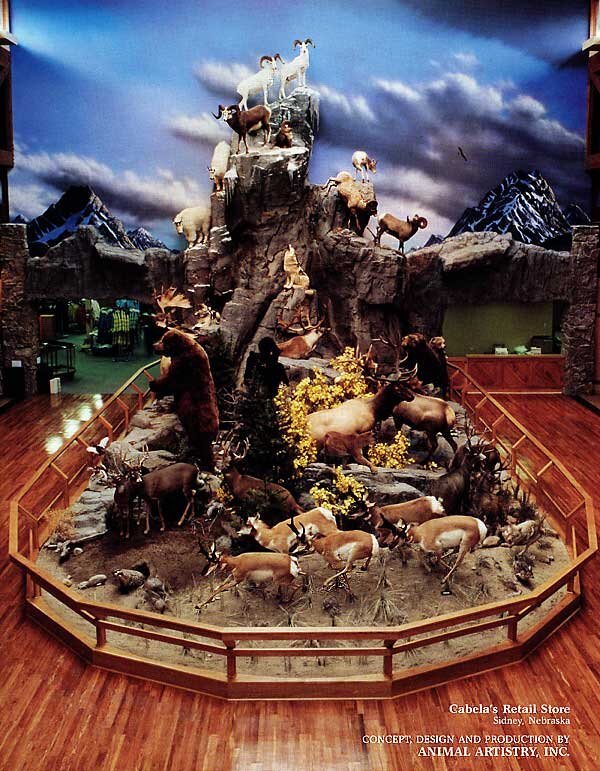How the First Cabela’s Store Changed the Taxidermy Industry Forever
There are many wonderful stories in our forty-year history, and one of our favorites began with a phone call in 1994. It was the GM of Cabela’s, the World’s Foremost Outfitter, explaining that the mail-order company was opening its very first retail store in Sidney, Nebraska, and asking if we could provide some mounts for a large concrete wall in the facility. When the conversation began with Dick and Jim Cabela, Mike told them he thought he could do better than heads on a wall — that he had an idea. This is the story of how the first Cabela’s store changed the taxidermy industry forever.
A Novel Idea
“It was the first time I built a model that showed typography of alpine peaks to foothills down to prairie and desert,” Mike remembers. “It had waterfalls on both sides that created streams and ponds, and the whole concept was that you could then put animals in their appropriate habitats.”
Here’s the thing — absolutely no one had done that before.
“Now it’s considered normal,” Mike laughs, “but then it was utterly groundbreaking and once they got the concept, their jaws just dropped.”
The Cabelas were game, and on the strength of handshake, the project began. The model was taken to the job site and served as a blueprint for construction. “In the meantime, we were mounting all of the animals that would go on the mountain,” says Mike. “It was in the neighborhood of 40, 45 animals. Some were small, but most were big game animals — sheep, goat, caribou, grizzly, moose, the whole thing. We’re mounting that while we’re building the mountain.”
One of the animals needed for the Cabela’s installation was a big, ten-foot Kodiak brown bear. “And there were none to be found at any price,” says Mike. “They just weren’t available. There were scrawny little ones and bad skins, but no good ones. I had hunted a Kodiak bear, my first one, probably ten years earlier. It was one of my prized possessions. And, to be very candid, I was trying to make payroll. So I called them and I said I’ve got this bear, and they said what do you want for it, and I told them and they said okay. I got the money, it immediately went to payroll, and they got the bear and it’s still there.”
The Vision Takes Shape
And as the mountain began taking shape, the Cabelas and everyone else on site “began to really see and get the vision,” remembers Mike. “This is very typical in my business. You can explain things to people, but they can’t envision it. And when they started to see it, they became very excited. And — they knew the term now — there are other dioramas that we could place here and place there, and we ended up doing about four other dioramas in that first store.”
Each of the installations featured a mural to anchor it, and they all shared the kind of action that had truly never been seen before. “When it was done, there was a grand opening,” Mike says, “and the parking lot was packed. It was so packed, they were waiting for some people to leave before letting new people in. And the word spread like wildfire.”
In those days, “it was an event to go to a Cabela’s store, not just to buy equipment, but for the experience of what you were seeing,” says Mike, which is a sentiment that remains true to this day. “They put a fence around it, they called it the conservation mountain, and they had a brochure that explained all of the animals and their location,” remembers Mike, “and they hired someone to stand there and hand them out and answer questions.”
The first store was a huge success, and it “gave them such confidence that they moved right on and did four other stores immediately,” says Mike. “It was obvious there was a market for it, and they started putting these stores in and we were involved in each of those. It became the iconic image of Cabela’s in the first store and the dozens that followed. Bass Pro followed suit, and Scheels did the very same thing. It became the norm for outdoor stores to do the thing that Animal Artistry invented. And we did invent it, purely — it wasn’t a variation on a theme. It was our idea.”
The Residential Influence
As outdoors stores continued to take this diorama idea and run with it, Animal Artistry did the same. “When people would call for trophy rooms, we would suggest essentially bringing that concept into their home, reduced in size,” says Mike. “The idea was not just having severed heads on a wall, not a den of death, but actually telling a story. We brought the living outdoors indoors, and it again found a huge audience — it was the first time it had ever been done.”
In years past, the trophy room was truly that — a den of death. “They were invented back in the 50s and 60s,” explains Mike, “and 99% of what was there was severed heads and shoulder months, rugs on the floor, all packed together. If it was a life-size, it was standing, and if it was a lion or a bear, it was snarling. It was actually grotesque and comical, there was no interaction between the animals and there was no habitat. We started changing that up, and now everything is based off that.”
An Industry Changed, Forever
We’ve had the good fortune of working for so many memorable clients, but Cabela’s remains a true highlight. Our work at the first Cabela’s store changed the direction of our business and indeed the industry as a whole. Mike’s beautiful bear stands on that conservation mountain in Sidney, Nebraska, to this day, and it’s a wonderful tribute to a concept that would have an incredible impact on taxidermy.


